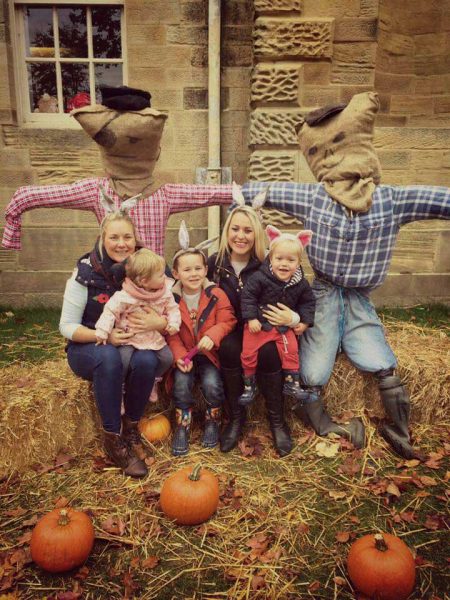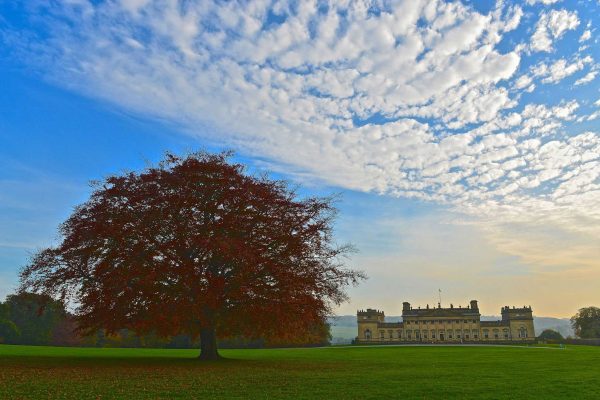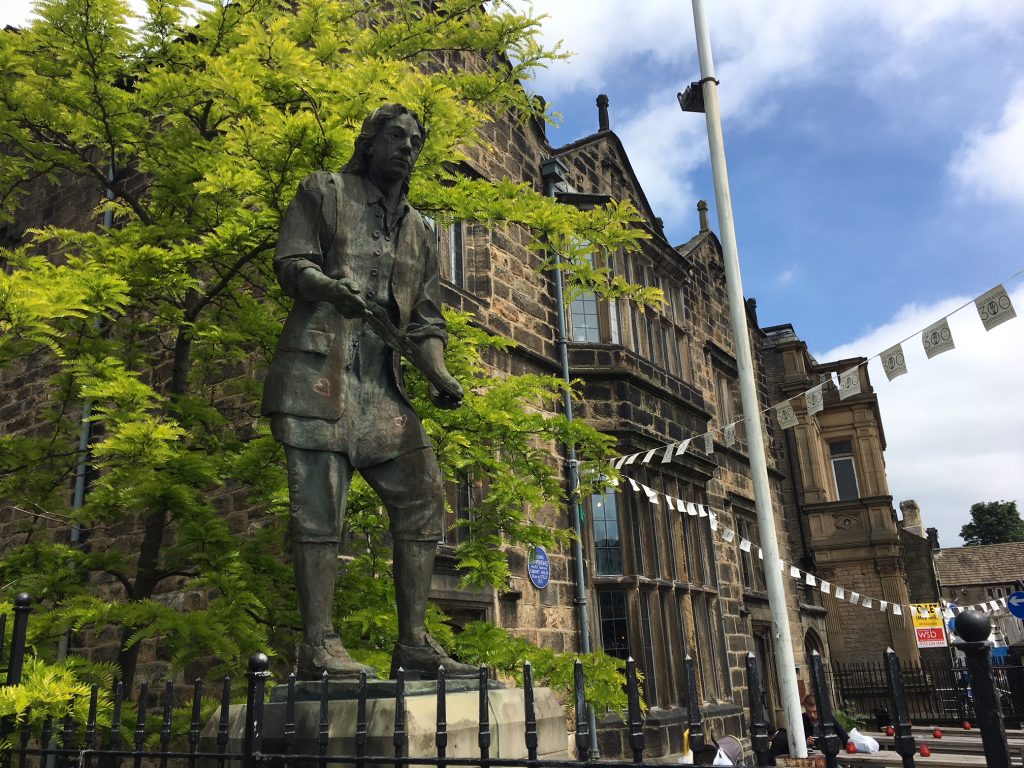
The statue of Thomas Chippendale in Otley by Graham Ibeson
Over 500 residents from the market town of Otley in West Yorkshire visited Harewood House on 5 June, to celebrate the 300th anniversary of Master Carpenter, Thomas Chippendale’s baptism. Residents were invited from Chippendale’s birthplace to visit the House and Estate for free, as part of a celebration of the wider exhibition currently running across the Estate.
Happy Baptism Day Mr Chippendale – Celebrating the Tercentenary of the Baptism of Thomas Chippendale on 5 June in Otley and at Harewood.
In this third Blog from Ann Sumner, Historic Collections Adviser, we hear about Otley Day at Harewood House and the Chippendale Society Annual Dinner on 5th June.
Over the last few weeks, driving through the Yorkshire town of Otley on the River Wharfe, the Chippendale 300 bunting and banners strewn across the streets have proclaimed the tercentenary of Thomas Chippendale, one of the market town’s most famous sons. The celebrations really started on 5th June 2018, which marked the tercentenary of the cabinetmaker’s baptism at All Saints Parish Church 300 years ago. I set off early to Otley en route to Harewood, that morning in glorious summer sunshine and found an atmosphere of real excitement on market day.
I headed for All Saints Church, which is little changed since the 18th century, to see the new exhibition The Life of Thomas Chippendale, 2018, which runs throughout the month of June. There I found informative storyboards and visitors to the town, eagerly embracing the new Visit Otley Chippendale Trail walking map. And I met enthusiastic Otley resident Meg Morton, who was busy putting up posters for the Baptism Concert that evening, Musick for a Summer Evening with soprano Joanne Dexter and the Chippendale Singers. We considered together the current font with the announcement about his baptism, but sadly admitted that this was not the original font used for his actual baptism!
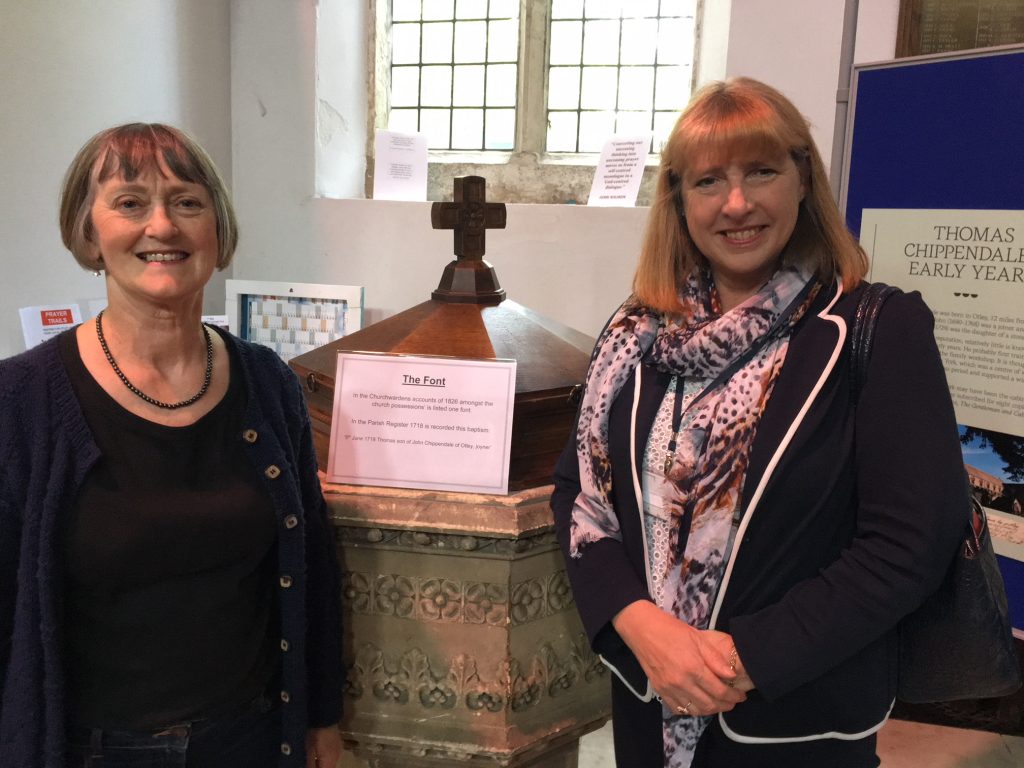
Otley resident Meg Morten enjoying the exhibition The life of Thomas Chippendale with Ann Sumner at All Saints Church on 5 June
Thomas Chippendale was the son of John Chippendale, a carpenter and joiner in Otley and Mary Drake the daughter of a local stonemason, who married in July 1715. It is thought that Thomas was born in a cottage where the Skipton Building Society is now on Boroughgate. In actuality, we know frustratingly little about his early childhood. I moved on to The Old Grammar School, where it is probable that the young Thomas received an early education. Outside is the statue of Chippendale by Graham Ibeson, the Barnsley sculptor. The building, originally Prince Henry’s Grammar School, is now the Stew and Oyster pub and upstairs there is a special splendid display of photographs of some of Chippendale’s most famous pieces of sculpture including Harewood’s famous wine cooler from the Dining Room suite. The pub hosted a light-hearted birthday party for Chippendale with a quiz and period folk music on the previous Saturday and guests dressed in 18th century costume.
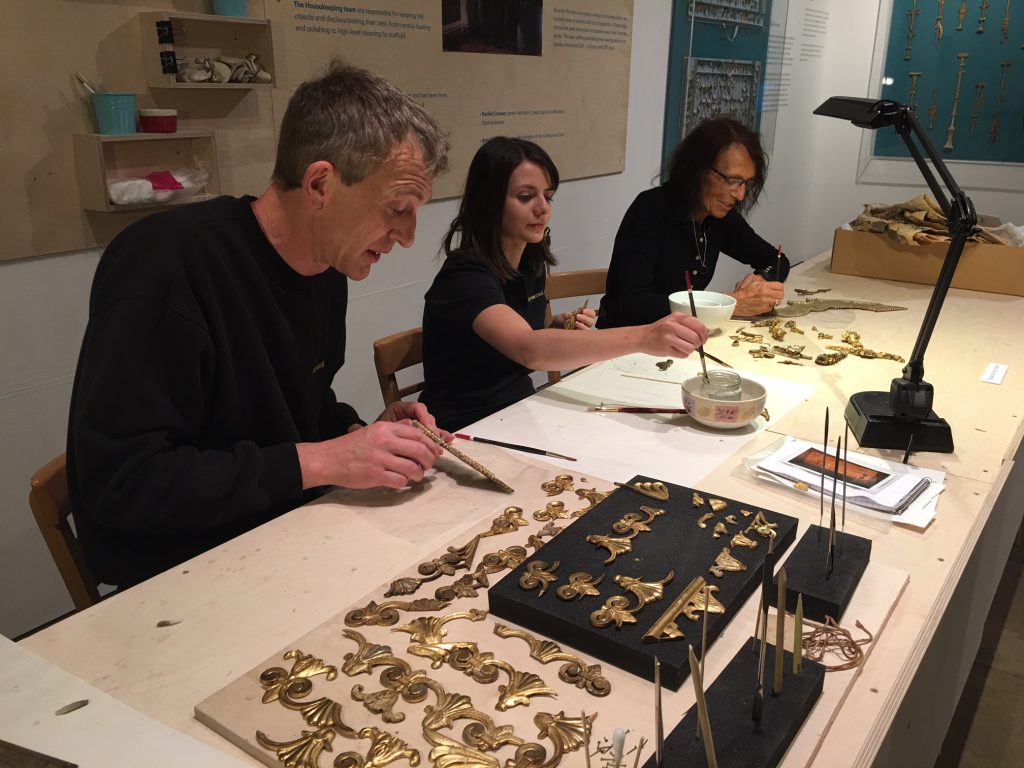
The in-house Conservation team at Harewood working on the Chippendale Wall borders during the Conservation in Action demonstration on Otley Day held at Harewood 5 June 2018
After chatting to some fascinated visitors, who had come especially to pay homage to the great man, I drove on to Harewood, just 7 miles from Chippendale’s home town, along with many other Otley residents. To mark the Baptism Day at Harewood House, where the Chippendale firm secured their largest commission, free entry was offered to the people of his home town. And they came in their droves to see the exhibition Thomas Chippendale: Designer, Maker, Decorator, Decorator. Visitors looked at the exhibition which explores the remarkable achievements of Chippendale at Harewood including the innovative mirrored display of the superb the Diana and Minerva commode. They particularly enjoyed the conservation in action demonstration by our in-house conservation team who were working on sections of wall borders which were used to cover the edges of both paper and cloth wall coverings by the Chippendale firm where they met dado rails, architraves and door cases. These borders were extremely expensive. At Harewood each room had a different elaborate border which cost 20 – 25 shillings for 4 feet (1.2 m) which was the equivalent for one week’s wages for a cabinetmaker at the time.
During the afternoon, I was fortunate enough to lead a tour of the exhibitions for Otley residents who were enormously enthusiastic about Thomas and his workshop’s activity furnishing the rooms here at Harewood and the range of skills they observed in the superb furniture on display. There was a real sense of pride amongst those on my tour, during which we considered how early tourists and visitors from the preacher John Wesley to the pastel portrait painter John Russell had reacted to the lavish new interiors. At the end I asked some residents what they thought of the interiors and furniture by Chippendale today, 300 years after his birth? Originally some tourists loved the interiors while others were not so enamoured and that was just the same today!
Here is some of the feedback:
‘I loved all the glitz and glamour – all the gold’
‘We are here to support the old man from Otley’
‘I really admired the craftsmanship but overall it’s a bit fussy and over the top for me!’
‘I think it is more for looking at than reclining on’ (reference to the State Bed)
There was just time to dash home to change and then it was off to Otley again – passing All Saints Church where people were arriving for the concert, we were heading on for the Otley Golf Club where the Annual Chippendale Dinner was being held.
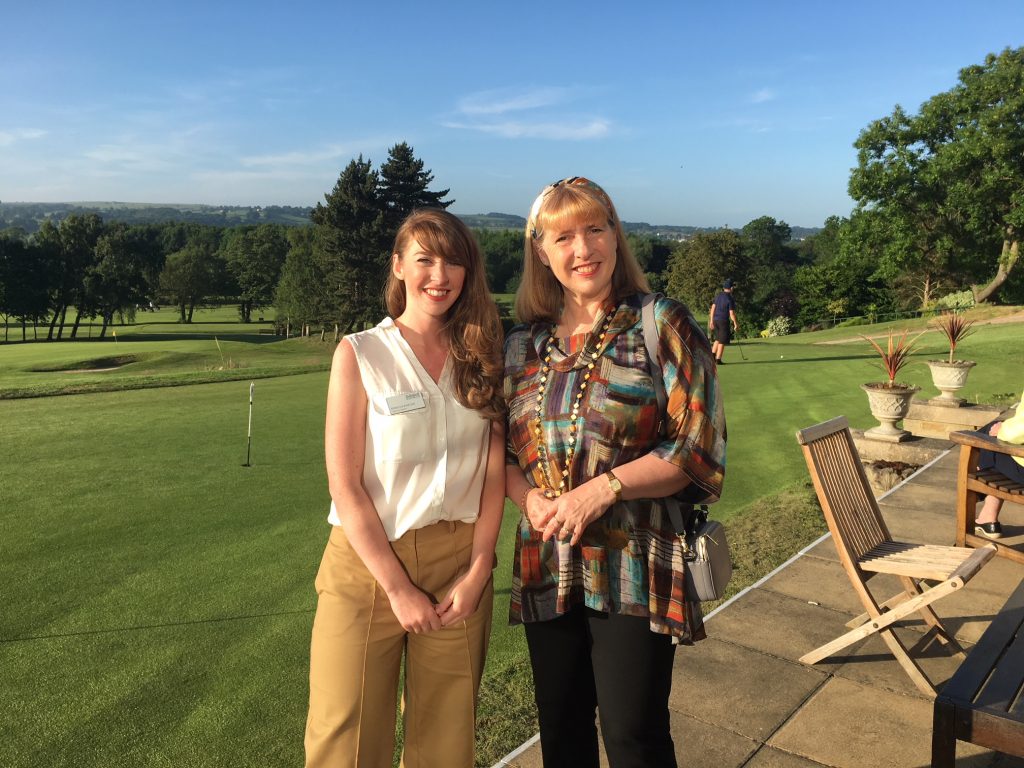
Beckie Burton, Collections Assistant at Harewood House Trust, with Ann Sumner at the Chippendale Society Annual Dinner 2018.
Always a lovely venue, that evening the weather was beautiful and the views were stunning, so guests enjoyed drinks on the terrace outside and admired the Baptism Cake, chatting to Adam Bowett the Chairman and Peggy Pullen, the in-coming Membership Secretary of the Chippendale Society. We awaited the arrival of our speaker, the Chippendale scholar Antony Coleridge, renowned since writing his book Chippendale Furniture: The Works of Thomas Chippendale and his Contemporaries in the Rococo Style. We enjoyed a good meal before his after dinner speech.
Anthony reminded us that his great great uncle was Samuel Taylor Coleridge who also had the same kind of love affair with Yorkshire that Anthony himself enjoyed, as he praised the great Chippendale commissions at Nostell Priory and Harewood House. After a fascinating survey of his experiences of Chippendale throughout his career he was thanked by Lord St Oswald, President of the Chippendale Society, who praised his passion for his subject and the eloquent way in which pieces of furniture were described, reminding us that Thomas Chippendale’s name was associated with exquisite furniture and perfection and that all of us, gathered together on such a beautiful evening in Otley for a very special occasion, were passionate about Chippendale’s achievements.
While coffee was served, I was fortunate enough to catch up with James Lomax, Honorary Curator of the Chippendale Society and co-curator of the brilliant exhibition in Leeds Thomas Chippendale 1718 – 1779: A Celebration of British Craftsmanship and Design. We chatted about the Society and achievements of the Chippendale 300 programme this year so far, over a piece of the Baptism cake, which was baked in Otley by the Patisserie Viennoise.
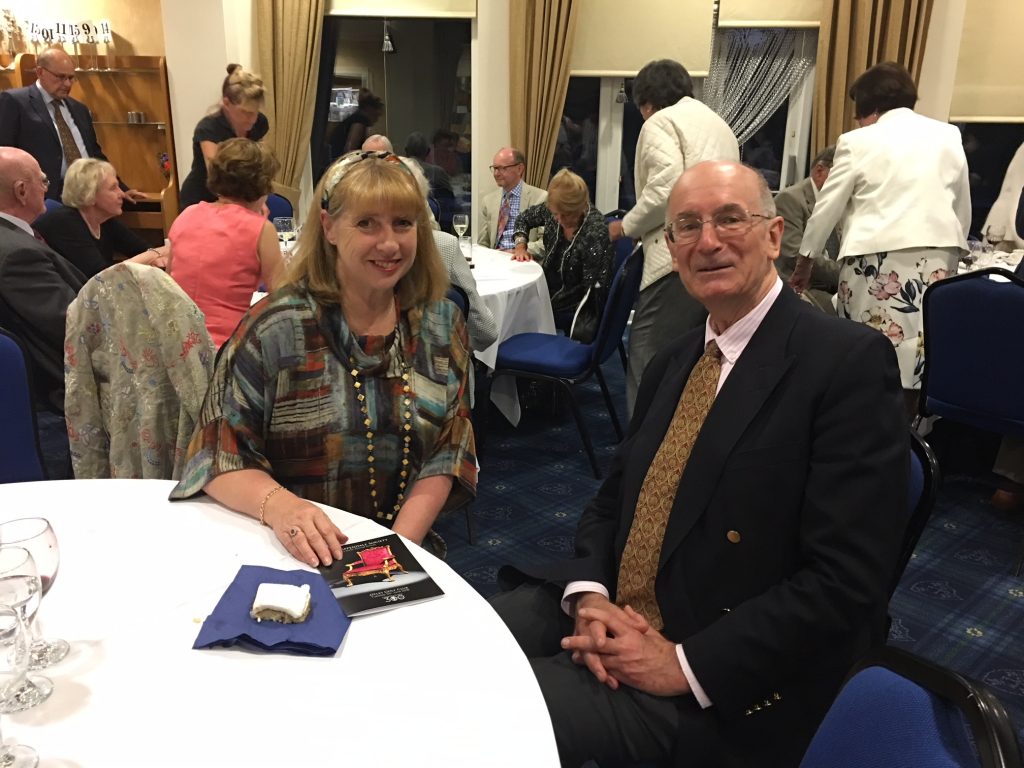
Ann Sumner enjoys an after-dinner conversation with James Lomax at the Chippendale Society Annual Dinner at Otley Golf Club
Ann: James, you have recently researched the history of The Chippendale Society which was founded in 1965 and I wonder have these annual dinners been held on his Baptism Day since the 1960s and has this for you been one of the most memorable occasions?
James: You could almost say that the Chippendale Society began life as a dining club! In 1963 a well-known Otley figure, Thomas Pickles, announced in the local paper that he was organising a dinner on 5th June to commemorate Chippendale’s birthday and invited anyone interested to apply for tickets. It was so successful, not least with the numerous people in the area named ‘Chippendale’, that it was repeated the following year. When the Society was formed in 1965 the dinner became an annual event and one of the main events on the calendar. We’ve always had a well-known personality to speak as our guest of honour and we were particularly keen to ask Anthony Coleridge this tercentenary year as he is without doubt the most distinguished scholar on everything to do with Chippendale whose magnificent study first appeared in 1968.
Ann: The Society aims to promote the appreciation and study of the work of Thomas Chippendale and the tercentenary year has been a busy one for you all. Tell us how the Society have specifically promoted the achievements of Thomas Chippendale senior and about some of the highlights for the Chippendale Society thus far in 2018.
James: The Society was well aware that the tercentenary was approaching and lobbied hard for a major exhibition! Fortunately Leeds Museums and Galleries were also keen to promote one of the area’s local heroes so we began a fruitful partnership which has resulted in the present exhibition. To date it has attracted nearly 40,000 visitors and has been a great success.
At the same time the Society took the lead in initiating a wider project intending to promote Chippendale. Thus the Chippendale300 project was born – a partnership of 14 different historic houses and organisations who all have their own programmes focussing on the great man. A Steering Group set up an excellent website which included a message of welcome from Prince Charles. Our events, exhibitions, lectures, workshops and publications are promoted on it and news stories. The programme continues to grow every day!
Ann: Today has been a great day in Otley, culminating in the dinner here. Tell us something about what we know about Chippendale’s family in Otley three hundred years ago, who were they and what do we know of his early life here?
James: We don’t know an awful lot about Chippendale’s life in Otley before he left for York and London, although a certain amount can be surmised. His family had been joiners, carpenters, builders and surveyors in Wharfedale for several generations and this was his essential background. He had no immediate siblings until his father married again and produced a new family who continued to live and work in Otley in this line of business until the 1960s. I did once see a white van inscribed with the words ‘Chippendale – Builders, Joiners, Shopfitters’.
Ann: We are here in Otley tonight and I’ve really enjoyed my day in the town and at Harewood. What would you recommend a Chippendale enthusiast see in Otley.
James: Your first port of call should be Graham Ibbeson’s statue of Chippendale in Manor Square beside the Old Manor once Prince Henry’s Grammar School where Chippendale might have gone to school. Then to the Parish Church where he was baptised, with some good early Georgian vernacular furnishings which were the sort of thing Chippendale’s family might have supplied. Then there is the site of his father’s premises in Boroughgate marked with a blue plaque where Chippendale might have been born, and in Bondgate there are the Chippendale Tea Rooms in the house owned by Chippendale’s uncle, a schoolmaster. And one can wander round the narrow streets of the old part of the town to soak up the atmosphere of an early Georgian market town which gave birth to a genius.
Ann: Today at Harewood we have opened our doors to Otley residents and I had the privilege to take a group on a tour of the exhibition Designer, Maker, Decorator this afternoon. Everyone seemed very proud of the Chippendale heritage and I wonder do you think this awareness has increased in the town over the last few months? Driving through I’ve noticed all the bunting!
James: It’s really very exciting to see how the people of Otley have pulled out all the stops to mark the tercentenary of one of its famous sons. It is great to hear of the birthday party thrown on Saturday, the sell-out concert and especially how many of them came to Harewood today and enjoyed your exhibitions. Throughout June there’s an ongoing festival, Celebrating Chippendale, in Otley with a host of different events and there is a concert going on even as we speak.
Ann: The Chippendale Society has done so much to raise awareness of Thomas Chippendale and his son Thomas over the past 50 years and particularly this year. What more can we look forward to in the second half of the tercentenary year?
James: The exhibition at Leeds Museum which ends on 9th June was a ‘warm up’ for the different events taking place over the rest of the summer around the country. At Harewood there’s a new display of one of Chippendale’s greatest masterpieces, the Diana and Minerva Commode and a long lost mirror from the White Drawing Room; at Nostell, Paxton and Burton Constable there are exhibitions exploring his work at these houses; an exhibition at Paxton House opened today and there are lecture series and study days at Dumfries House, Weston Park and Firle Place. The Metropolitan Museum of Art and the V&A Museum have arranged new displays and the former are publishing (for the first time) all Chippendale’s brilliant drawings for the first edition of his great book, The Director. We are so pleased to hear that funding has been secured for the symposium comparing the Harewood and Paxton commissions on 29 September at Paxton which will be fascinating.
Ann: Thank you James so much for your time tonight which I really appreciate. It’s been a wonderful day with so much enthusiasm for Thomas Chippendale’s work 300 years after his birth.
With special thanks to Christie’s for their sponsorship of the Chippendale 300 blog series.















